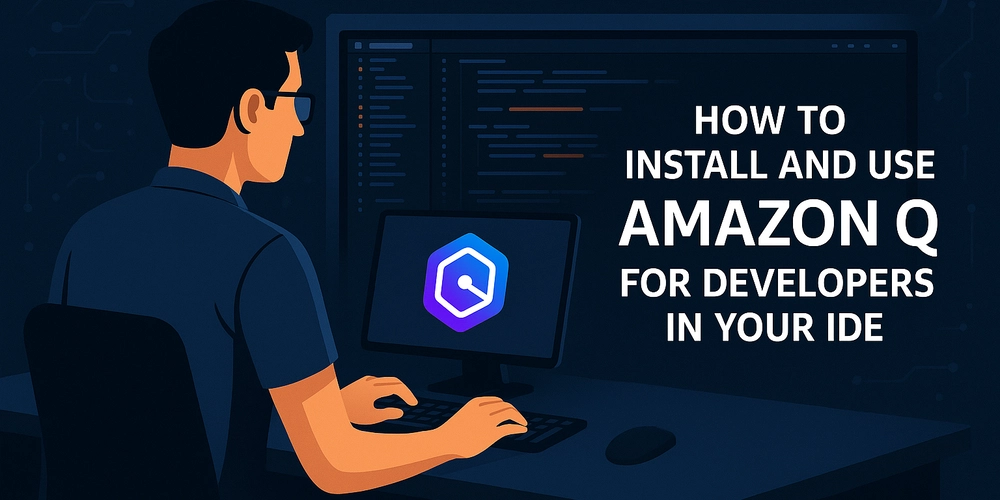The CISO’s Guide to Securing AI and Machine Learning Systems
As AI and machine learning reshape business operations, they also introduce new security challenges—making Securing AI Systems for CISOs essential, as traditional frameworks often fall short. For Chief Information Security Officers (CISOs), securing AI/ML systems requires expanding security mindsets beyond conventional data protection to encompass model integrity, algorithmic transparency, and ethical use considerations. With organizations […] The post The CISO’s Guide to Securing AI and Machine Learning Systems appeared first on Cyber Security News.

As AI and machine learning reshape business operations, they also introduce new security challenges—making Securing AI Systems for CISOs essential, as traditional frameworks often fall short.
For Chief Information Security Officers (CISOs), securing AI/ML systems requires expanding security mindsets beyond conventional data protection to encompass model integrity, algorithmic transparency, and ethical use considerations.
With organizations increasingly embedding AI capabilities into critical business functions, CISOs face mounting pressure to develop comprehensive security approaches that protect these sophisticated systems without hampering innovation.
This guide explores the unique security challenges of AI/ML implementations and provides practical strategies for establishing robust protection mechanisms that balance security requirements with business objectives.
The Evolving Threat Landscape for AI Systems
AI and machine learning systems face distinctive security challenges that extend beyond traditional cybersecurity concerns.
These technologies operate in a multi-layered environment where vulnerabilities can manifest at the data ingestion stage, during model training, or within deployment frameworks.
Adversaries targeting AI systems employ sophisticated techniques like adversarial examples that deliberately manipulate inputs to induce incorrect outputs, poisoning attacks that corrupt training data to compromise model integrity, and model inversion attacks that attempt to reconstruct sensitive training data from model parameters.
Additionally, AI systems often process massive volumes of potentially sensitive data, creating expanded attack surfaces that attract both sophisticated nation-state actors and opportunistic criminals.
The consequences of compromised AI systems can be particularly severe, potentially leading to corrupted business decisions, regulatory violations, reputational damage, and in safety-critical applications, threats to human welfare.
For CISOs, understanding this evolving threat landscape represents the crucial first step in developing proportionate security controls.
Implementing a Defense-in-Depth Approach for AI Protection
Securing AI systems demands a comprehensive strategy that addresses vulnerabilities across the entire AI lifecycle. Organizations must establish multiple layers of defense that protect both data assets and model integrity while ensuring appropriate governance frameworks oversee AI operations.
- Data Protection and Pipeline Security: Implement robust controls for training data, including provenance tracking, integrity verification, access controls, and encryption for data in transit and at rest. Establish secure data pipelines with appropriate segregation of duties and validation checkpoints.
- Model Development and Training Safeguards: Institute secure development practices for AI models, including version control, code reviews, vulnerability scanning, and comprehensive testing for resilience against adversarial inputs. Implement monitoring systems that detect anomalous behavior during training processes.
- Deployment Environment Protection: Secure the infrastructure hosting AI models through network segmentation, container security, API protection, and runtime monitoring. Apply the principle of least privilege to limit access to model endpoints and parameters.
- Model Monitoring and Maintenance: Establish continuous monitoring systems that detect drift, degradation, and potential compromise of production models. Implement robust procedures for model updates, patching, and decommissioning that maintain security throughout the model lifecycle.
- Supply Chain Risk Management: Apply rigorous security assessment procedures to third-party AI components, pre-trained models, and data sources. Establish clear security requirements for vendors providing AI-related services or technologies.
Effective implementation of these controls requires cross-functional collaboration between data scientists, engineers, security professionals, and business stakeholders.
Security teams must engage early in the AI development process rather than retrofitting protections after deployment.
This proactive approach ensures security considerations influence architectural decisions from inception, resulting in more resilient systems that maintain protection even as threat landscapes evolve.
Establishing Governance Frameworks for Secure AI Operations
Robust governance forms the foundation of successful AI security programs, providing the structure needed to manage risks consistently across the enterprise.
Governance frameworks should clearly define roles, responsibilities, and accountability for AI security, establishing who “owns” various aspects of risk management from development through deployment and ongoing operations.
These frameworks must also codify the organization’s risk tolerance for different AI applications, recognizing that critical systems require more stringent controls than experimental applications.
Documentation requirements play an essential role in governance, creating auditability and transparency around model development, training procedures, and security testing.
Security teams should collaborate with legal, compliance, and ethics specialists to ensure AI systems adhere to relevant regulations and organizational values, particularly when processing sensitive data or making consequential decisions.
Additionally, governance frameworks should address incident response procedures specifically tailored to AI systems, ensuring the organization can respond effectively to unique threats like data poisoning or model extraction attacks.
- Security Review Gates: Establish formal security assessment checkpoints at critical stages of the AI lifecycle, including initial data collection, model architecture selection, pre-production verification, and deployment readiness. Each gate should verify compliance with security requirements appropriate to the system’s risk profile.
- Continuous Education: Develop specialized training programs that help security professionals understand AI-specific vulnerabilities while simultaneously educating data scientists and ML engineers about security principles. This cross-pollination of knowledge creates a more cohesive security culture around AI systems.
Effective AI security governance requires continuous evolution as technologies, regulatory expectations, and threat landscapes mature.
CISOs should establish feedback mechanisms that incorporate lessons from security incidents, near-misses, and industry developments into governance frameworks.
By building adaptability into governance structures, security leaders can maintain appropriate protection even as AI capabilities advance.
Organizations that successfully implement comprehensive governance for AI security will not only reduce their risk exposure but also build greater trust with customers, regulators, and partners – ultimately transforming security into a competitive advantage in the AI-driven economy.
Find this News Interesting! Follow us on Google News, LinkedIn, & X to Get Instant Updates!
The post The CISO’s Guide to Securing AI and Machine Learning Systems appeared first on Cyber Security News.








































































![Apple Developing AI 'Vibe-Coding' Assistant for Xcode With Anthropic [Report]](https://www.iclarified.com/images/news/97200/97200/97200-640.jpg)
![Apple's New Ads Spotlight Apple Watch for Kids [Video]](https://www.iclarified.com/images/news/97197/97197/97197-640.jpg)














































































































_Inge_Johnsson-Alamy.jpg?width=1280&auto=webp&quality=80&disable=upscale#)



























































































































![[The AI Show Episode 145]: OpenAI Releases o3 and o4-mini, AI Is Causing “Quiet Layoffs,” Executive Order on Youth AI Education & GPT-4o’s Controversial Update](https://www.marketingaiinstitute.com/hubfs/ep%20145%20cover.png)






























































































































































![From Art School Drop-out to Microsoft Engineer with Shashi Lo [Podcast #170]](https://cdn.hashnode.com/res/hashnode/image/upload/v1746203291209/439bf16b-c820-4fe8-b69e-94d80533b2df.png?#)





































































































